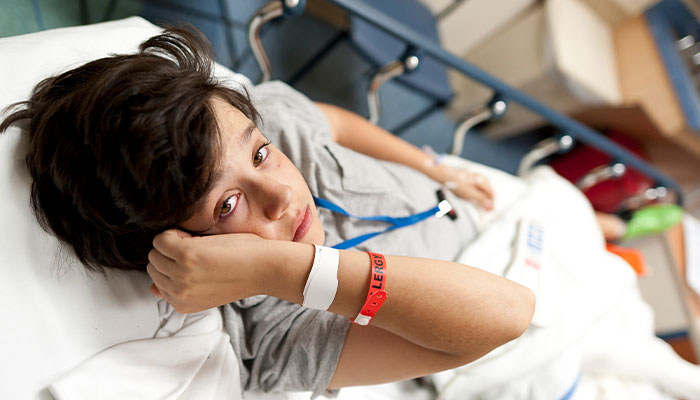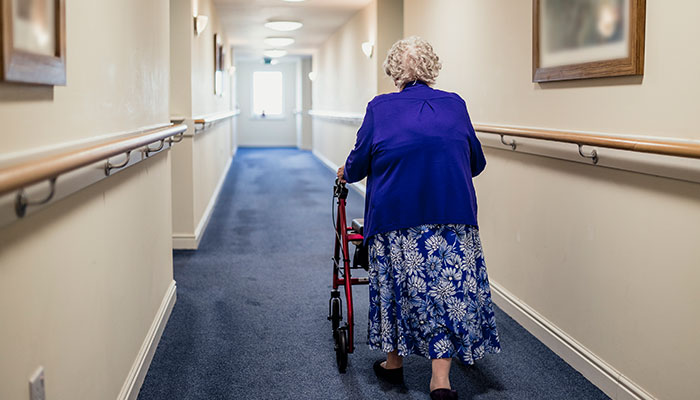Researchers have delivered a report card on how often Australian children get the recommended care for common medical conditions – and found that 60 per cent of the time, on average, their healthcare meets guidelines.

Professor Jeffrey Braithwaite led the CareTrack Kids study, the largest of its kind in the world.
Certain conditions fare far better than others; kids presenting with autism, diabetes, anxiety or head injuries received care that’s in line with clinical practice guidelines more than 75 per cent of the time. But some other conditions – tonsillitis, reflux, upper respiratory tract infections and fevers – attracted the appropriate care less than 54 per cent of the time.
Macquarie’s CareTrack Kids study - the largest of its kind in the world – was published in the Journal of the American Medical Association last month. “This is the most extensive and most rigorous study of paediatric practices in the world,” says Professor Jeffrey Braithwaite, Founding Director of the Australian Institute of Health Innovation, who led the study.
Researchers from the Australian Institute of Health Innovation compared records of more than 6,600 children aged under 16 to assess how often they received care in accordance with clinical practice guidelines.
The nationwide study then enlisted over 100 health experts to look at various guidelines that had been developed by clinicians to specify how medical staff should deliver care for 17 common conditions.
The experts then used the guidelines to assess the health records of thousands of children from 139 sites including 85 GP clinics, 20 specialist practices, and 34 hospital emergency departments and wards in NSW, Qld and SA. Then they worked out how often the care that was described in the records, matched the clinical guidelines for each medical condition.
“Surprisingly, not much has been done in looking at health systems and assessing how they deliver care and whether they meet the care standards that are set,” says Professor Braithwaite.
“This is only the second study of its kind in the world, and methodologically it is very comprehensive.”
He says that, while the results are as good as elsewhere in the world, understanding where treatment for common conditions departs from guidelines will help Australia to improve health care delivery.
Unsurprising departures
Treatments that depart from clinical care guidelines are often unsurprising, Professor Braithwaite says; antibiotic use in conditions that don’t need antibiotics is a common occurrence, despite strong recommendations against its unwarranted use by public health authorities.
“In practice, this could mean that rather than complying with guidelines for tonsillitis, fever or upper respiratory tract infection, a clinician may treat a child with antibiotics contrary to recommendations,” he says.
Professor Braithwaite says that it’s not appropriate to expect that guidelines be followed slavishly. He points out that clinicians often have good reasons to depart from the guidelines, which can be more than 100 pages long.
“Sometimes it’s because a clinician lacks awareness of the clinical guideline – but it’s possible that they might be using a different guideline, and have developed an approach that works for the patients in their practice,” he says.
“It could also be that a patient comes in with a particular mix of different conditions, not just the condition to which the guideline applies – so the treatment needs to take these other conditions into account, which may mean departing from guidelines,” he says.
“Clinicians also need to be pragmatic. In a six-minute consultation, on average, they may not have the support that they need to gather a history, make a diagnosis and apply the guideline rigorously, including, for example, to educate the patient thoroughly about the condition.”
He says that it’s important to take into account the views of parents, who may have preferences for or against certain treatments. Parents can also put subtle – or unsubtle – pressure on clinicians to prescribe.
“Some parents want to walk away with something, they’ve googled a condition, they’ve got an expectation of a particular tablet or some other treatment.”
What’s the next step?
Professor Braithwaite says that the paper’s authors have made a number of recommendations based on the findings. He points out that clinicians want to do their best for their patients. “We need to modify the system to help them achieve this goal,” he says.
Professor Braithwaite says that copies of the study have gone to health ministers and health department secretaries across Australia. Further papers planned will more closely examine particular conditions in depth.
“The reason this study is so significant is that we don’t actually track care, continuously,” says Professor Braithwaite. “It’s taken us several years to run an analysis on health care data from a single point in time, that’s health care over 2012-13, to deliver this cross-sectional report,” he says.
“One of the recommendations of the study, is that we need to set our health records up in a much better fashion so that they can deliver data that lets us monitor how well we are delivering care in accordance with these clinical guidelines,” he says.
This would also allow new guidelines to be assessed and for the key indicators to be tracked, he adds. “Otherwise we have no idea what progress we are making or what areas are are becoming a problem."



